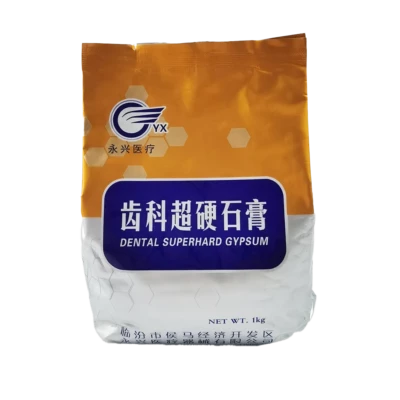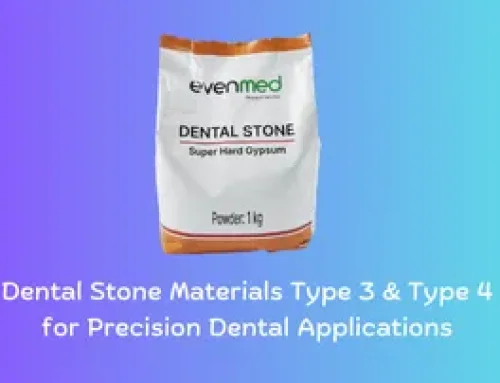If you’ve ever been to a dentist’s office, you’ve likely seen dental stone being used as part of various dental procedures. Dental stone is a versatile material that plays a crucial role in dentistry, from creating accurate dental casts to crafting intricate dental models. In this article, we will delve into the world of dental stone, exploring its different types, uses, and benefits.
Introduction
Dental stone, also known as dental plaster or gypsum, is a vital component in the field of dentistry. Its versatile nature and unique properties make it an indispensable material for various dental applications. Let’s take a closer look at the different types of dental stone and their uses.
What is Dental Stone?
Dental stone is a form of calcium sulfate hemihydrate, a fine powder that, when mixed with water, creates a workable paste. This paste can be poured into molds, capturing even the tiniest details and intricacies, ultimately solidifying into a hard and durable material.
Types of Dental Stone
Dental stone comes in different types, each catering to specific dental needs:
Type 3 Hard Dental Stone
- Also known as plaster or laboratory stone
- Moderate compressive strength (~10,000 psi)
- Slightly lower expansion than Type 4
- Ideal for reproducing fine details
- Commonly used for single-unit restorations, small bridges, and diagnostic models
Type 4 Super Hard Dental Stone
- Also referred to as improved stone or high-strength stone
- High compressive strength (~14,000 psi)
- High hardness and abrasion resistance
- Low expansion for accurate models
- Used for extensive restorations like long span bridges, full arch prosthetics, implant restorations, and orthodontic appliances

Properties and Characteristics
Setting Time
The setting time of dental stone varies among the different types. Impression plaster sets relatively quickly, while die stone has a longer setting time, allowing for more intricate work.
Strength and Hardness
Dental stone’s strength and hardness increase from impression plaster to high-strength die stone. This ensures the durability of the final dental models and restorations.
Expansion and Contraction
The expansion and contraction properties of dental stone are crucial for accurate replication. Different types offer varying levels of expansion to accommodate specific applications.
Color Variations
Dental stone is available in various colors, aiding in better visualization of details and enhancing the overall aesthetics of dental models.
Applications in Dentistry
Dental stone finds its application in a wide range of dental procedures:
Creating Dental Impressions
Impression plaster and model plaster are used to create initial impressions of patients’ teeth and oral tissues, forming the basis for further treatment plans.
Orthodontic Model Fabrication
Dental stone is vital in orthodontics for crafting accurate models of patients’ teeth, aiding in the design and fitting of orthodontic appliances.
Prosthetic Model Development
Prosthodontists utilize dental stone to create detailed models of patients’ mouths, facilitating the construction of crowns, bridges, dentures, and other prosthetic devices.
Dental Restoration Manufacturing
Die stone plays a pivotal role in the production of dental restorations, ensuring precision and quality in the fabrication of crowns, veneers, and inlays.
Advantages of Using Dental Stone
Dental stone offers several advantages that contribute to its widespread use in dentistry:
Accuracy and Precision
The ability of dental stone to capture intricate details with high precision ensures that dental professionals can work with confidence.
Durability
The durability of dental stone ensures that created models and restorations remain intact and reliable over time.
Detail Replication
Dental stone’s excellent flow properties allow it to replicate fine details, enabling the creation of lifelike dental models.
Selecting the Right Type of Dental Stone
Choosing the appropriate type of dental stone depends on the specific dental procedure and desired outcomes. Dental professionals must consider factors such as setting time, expansion, and intended use.
Proper Handling and Mixing
Achieving optimal results with dental stone requires proper handling, accurate measurements, and thorough mixing to create a homogeneous paste.
Tips for Working with Dental Stone
- Maintain a clean working environment to prevent contamination of the dental stone.
- Use the recommended water-to-powder ratio for consistent results.
- Mix the dental stone in a controlled manner to avoid air bubbles.
Common Mistakes to Avoid
- Overloading the dental stone with water, affecting its properties and strength.
- Inadequate mixing leading to inconsistencies in the final product.
- Ignoring the setting time, which can impact the quality of the model.
Maintenance and Storage
To ensure the longevity of dental stone products, store them in a cool, dry place away from direct sunlight and moisture.
Future Innovations in Dental Stone Technology
As dental technology continues to advance, we can expect innovations in dental stone formulations, further enhancing accuracy, efficiency, and overall patient care.
Conclusion
In the world of dentistry, dental stone serves as a cornerstone material, enabling the creation of accurate and detailed dental models for various procedures. Its diverse types and properties cater to the specific needs of different applications, ensuring the highest level of precision and quality. As dental technology evolves, so too will the capabilities of dental stone, continuing to shape the field of modern dentistry.
FAQs (Frequently Asked Questions)
Q1: Is dental stone safe for patients? A: Yes, dental stone is safe for patients and is widely used in dental procedures.
Q2: Can dental stone be used for orthodontic appliances? A: Absolutely, dental stone is commonly used to create accurate models for designing orthodontic appliances.
Q3: How long does it take for dental stone to set? A: The setting time varies depending on the type of dental stone used, ranging from a few minutes to several hours.
Q4: Can dental stone be used for permanent dental restorations? A: Dental stone is primarily used for creating models and impressions, not for permanent restorations. It serves as a crucial step in the restorative process.
Q5: How should I handle and store dental stone products? A: Dental stone products should be handled and stored according to the manufacturer’s recommendations, typically in a cool, dry place away from direct sunlight and moisture.




